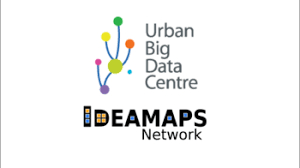639
By Lizzy Chirkpi
The IDEAMAPS Data Ecosystem has launched an initiative to identify and upgrade slums and informal settlements across Africa, including Nigeria, in a bid to attract development and prevent the continent from being overwhelmed by sprawling urban slums in the future.
As part of its efforts, the organization held a two-day workshop in Abuja from August 28 to 29, bringing together key players from both the public and private sectors.
The workshop provided an overview of IDEAMAPS’ activities and featured representatives from the National Bureau of Statistics, Federal Ministry of Health, Federal Ministry of Innovation, Science and Technology, as well as academics from environmental and health departments, among others.
Funded by the Bill & Melinda Gates Foundation, the IDEAMAPS project employs artificial intelligence, satellite imagery, and participatory mapping to generate detailed and validated data about slums and informal settlements.
Professor Joao Porto de Albuquerque, Director of the Urban Big Data Centre at the University of Glasgow and principal investigator of the project, underscored the urgency of the initiative: “Nearly one billion people live in slums and informal settlements globally, and the number is growing. Our aim is to make these areas visible in official data, because without that visibility, they remain neglected in planning and investment.”
Lagos and Kano in Nigeria, alongside Nairobi in Kenya, have already undergone pilot mapping under this initiative. Prof. Albuquerque said Nigeria was chosen because of its “exceptionally fast urban growth rate and the pressing need to address the rise of informal settlements, while also having strong potential to implement meaningful change.”
Mrs. Esuabuna Asanye, Permanent Secretary of the Federal Ministry of Innovation, Science and Technology, who collaborates on the project in Nigeria, said the initiative will enable both federal and state governments to act decisively: “With adequate data, we can work with local authorities to upgrade slums and stop the narrative that Africa will become a continent of slums.”
In addition to slum mapping, IDEAMAPS is deploying tools like artificial intelligence, satellite imagery, and participatory mapping to tackle climate and health challenges affecting vulnerable populations in these areas.
The workshop highlighted that urban slums are high-risk zones for climate-sensitive diseases such as cholera, malaria, and diarrhoea, as well as extreme weather events including floods and heatwaves. Outbreaks of such diseases have already spiked in the aftermath of major flood events.
According to projections, the North-West and North-East zones including Kebbi, Zamfara, Katsina, and Yobe face the highest vulnerabilities, with a projected 21% increase in disease burden by 2030. Flood-related displacement threatens to affect 800,000 people by 2030, while an additional 550,000 could be impacted by sea-level rise and coastal flooding by 2070.
The initiative aims to provide validated, actionable data to guide federal and state interventions, including the Health National Adaptation Plan (HNAP) and other resilience-building programs such as CREST, CRIBS, and HOPE-Health.
The next phase of IDEAMAPS will see the project expand to more African cities in the coming months, establishing a continental network of actionable data to transform urban futures.



